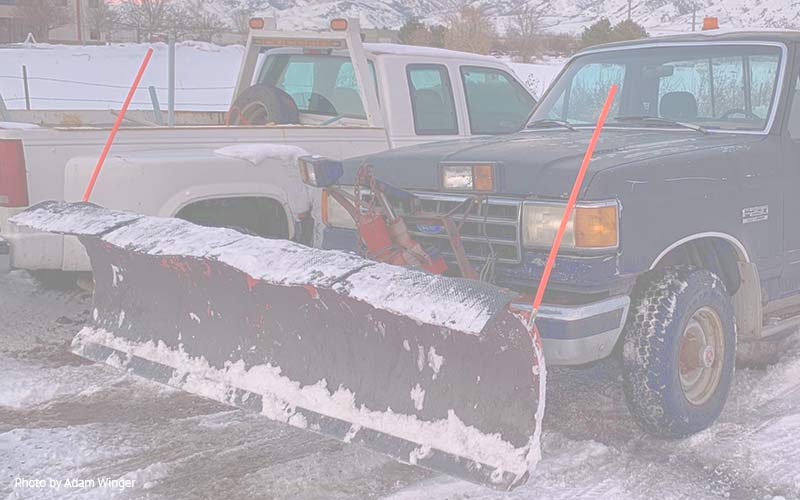Last week (March 13 and 14) 29 inches of snow fell in 24 hours, more in certain locations, elevations, and hollows.
When that much snow falls so fast, and it’s wet, heavy snow, plow operators are faced with the challenge of keeping local roads and driveways open while managing to find somewhere for all that snow to go.
Dave Millard of Native Stone in Warren said that storms like The Valley experienced last week on March 14 and 15 create conditions where plow operators have to be careful with their equipment. He said pushing wet heavy snow uphill is hard on the trucks.
“You have to fight with the trucks when you’re pushing snow and have to be careful of the truck or the next thing you know, the truck is stuck and then you’ll get behind even more,” Millard said.
He said when the snow banks approach 50 inches due to back-to-back storms, it becomes a challenge as to where the snow goes.
“All that snow has to go somewhere. And then the snow banks freeze,” Millard pointed out.
Millard relies on several contractors with loaders to help push back the snow banks when roads and driveways become narrow. He also has a loader.
He points to the balance that plow people have to strike between using their equipment to the maximum of its ability and making sure not to break it. During last week’s storm, one of his trucks went into a ditch on its side, leaving him to spend 40 hours in a plow truck trying to keep people plowed.
Freeze snow cycles, snowbank freeze. 50 inches back-to-back, in 8 inches you’re asking where all that snow will go.
He said this year he’d lost front end ball joints, (blowing them up in this last storm) and had previously had his sander break.
“What we’re doing is brutal on the equipment. Don’t ever buy a used plow truck or plow or sander!” he said.
Native Stone has some 115 accounts, handled by two plow trucks which is manageable, Millard said, until something happens to one of the trucks. His drivers have print outs of their accounts and routes and check them off as they complete them.
He also noted that in intense storms, like the one last week, plow drivers don’t have time to wait for homeowners to come out, clean off their cars and move them so that the whole driveway can be plowed.
Jason Dunbar, Waitsfield, is a solo plow contractor who works in Warren, Waitsfield and Fayston with 48-50 customers. During this last storm, he spent time contacting customers to let them know he’d be sending a loader.
“Some people said they could still get in and out and didn’t need the loader, but then I remind them about emergency vehicles and it changes their whole perspective. You have to think about worst case scenarios,” he said.
During last week’s storm, Dunbar was flat out while the snow was falling, coming home to sleep for four-hour naps before heading back out. He said that as a sole proprietor, he has to protect his truck.
“I’m not going to slam my truck into tall frozen snow banks. If I break it, I’m screwed and so are my clients. I don’t have a plan B. That’s why I rely on loaders in storms like these,” he said.
He and Millard agreed that the wetness of last week’s snow made snow management difficult.
“If it had been 20 degrees and that snow was fluffy, we’d have had an easier time,” he added.
Ed Read, owner of Mad River Property Management in Waitsfield, plows for 180 clients and has 10 plow trucks on the road during storms. For him, keeping the banks pushed back is a maintenance thing. He has a small loader than can be trailered around to his clients which goes on throughout the season so that in the event of storm like last week’s, there’s room for the snow.
‘The walls get so high that with a normal truck plow, the snow doesn’t get over it any more and when it’s heavy and cement-like, then it turns to concrete as it forms. For us, I tell my drivers to drive up and plow down because it’s easier on the trucks,” Read said.
Read agreed with Millard and Dunbar that it’s tricky to keep the equipment operational while keeping roads and driveways open. He puts snow tires and new plows on all the trucks and yet they’re at various stages of running and repair throughout the winter, he said.
“That’s a lot of torque and that was a really juicy storm. It was wet and underneath it got icy once plowed,” he explained.
“But it’s nice to know that we can still get a big dump like that. In my mind, that’s great!” he added.













